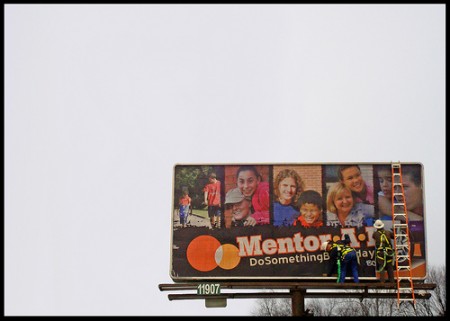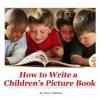It’s a basic question: what is point of view and when do you use which point of view (or POV) in a novel?
Point of view refers to the basic outlook of your story, who narrates it.
First-person POV is firmly in a character’s head and told as if the character was narrating the action. It uses “I, me, my, myself” to indicate the narrator. Another description is to consider the placement of the story’s camera. Here, the camera sits firmly behind the character’s eyes. What the narrator thinks, the reader knows.
I am scared to try back handsprings at the football game tonight because I haven’t practiced enough.
Second-person POV uses “you” as it talks directly to the reader. It’s considered an awkward POV for most fiction, although there are, of course, exceptions. Camera placement here would be above the narrator’s head, pointed at the reader.
You will notice that the cheers will come out with a series of aerials, including back handsprings.
Third-person POV uses “he, she, it, they” pronouns as it refers to people and events. For this POV, we often speak of how “close” it is to the narrator. Close 3rd person POV puts the camera directly above the main character’s head and the camera placement tells the reader about what the character is paying attention to, what s/he is thinking. It is different from the 1st person POV, in that, we don’t know the narrator’s thoughts directly, but only indirectly. Sometimes, the Close 3rd gives information and the reader assumes the character thought that, said that or did that.
She hesitated, then with a burst of energy, she sprinted then threw herself forward into a back handspring.
The 3rd person POV can also draw back and be more detached, a recitation of a narrative from a more objective POV. The nicest thing is that this POV can change focal length at will, drawing back to describe a football field, then zooming in to the cheerleader as she does a back handspring and feels a muscle tear.
Her hands pushed off the grass and she catapulted over, a perfect back handspring, until—oh, no! Just as she landed, her ankle, it gave way. Pain shot through her foot and she collapsed.
Omniscient POV puts the camera on the ceiling looking down at everyone. It dips in and out of character’s thoughts and gives a comprehensive look at anything and everything the author wants. It’s difficult to pull off, too, because the reader is uncertain where to focus. If done badly, the reader may try to identify with too many characters and fail to really care about any of them.
Bored, her Mom glanced up from her text message in time to see Betty sprint for the handspring. Would this game never end?
Oh, no! Pain shot through Betty’s foot. Mom, she thought, Mom. Where are you?
Notice that this is a discussion of point of view, not verb tense. You can write in 1st person, present tense or 1st person, past tense:
1st person, present tense: I walk across the football field.
1st person, past tense: I walked across the football field.
The difference in verb tense definitely affects the overall tone and voice of your novel, so you should consider it, too, when you write.
Use this photo and try writing from the POV of the climber, from each of the observers, and from an omniscient POV. Each POV will include and
YA for Dummies and Prairie Storms
What sounds does a ground hog make? An earless lizard? A burrowing owl? Six months ago, I had no idea!

August, 2011 Release
When I decided to create a book trailer for my forthcoming book,
PRAIRIE STORMS, I knew I wanted something fun and useful for kids, parents and educators. We know the sounds of dogs, cats, horses, cows and goats. But do we know the sounds made by other common creatures? Skunks? For this trailer, I decided to focus on the sounds made by each animal in
PRAIRIE STORMS. This post is about how I created that video.
But it’s also a celebration of a second book launch,
Writing Young Adult Fiction for Dummies, which includes my sidebar, “Darcy Pattison talks Book Trailers”.
 Written by Deborah Halverson, founder of the writer’s advice website DearEditor.com, it has great advice on writing and publishing a teen novel. Deborah edited young adult and children’s fiction with Harcourt Children’s Books before picking up a pen to write the award-winning teen novels Honk If You Hate Me and Big Mouth.
Written by Deborah Halverson, founder of the writer’s advice website DearEditor.com, it has great advice on writing and publishing a teen novel. Deborah edited young adult and children’s fiction with Harcourt Children’s Books before picking up a pen to write the award-winning teen novels Honk If You Hate Me and Big Mouth.
The book is filled with great features, including:
- tips for targeting an audience, finding an angle that’ll make the story stand out, and writing a killer hook
- an extensive chapter on self-marketing to help writers move boldly into the realm of self-promotion–including book trailers
- techniques and exercises to shape plot, create teen-friendly characters, develop a convincingly youthful voice, write natural dialogue, and use setting to illuminate characters and plot
- 13 National Book Award winners and finalists, Newbery medalists and honorees, and other award-winning luminaries sharing their insights
- self-editing tools to transform a first draft into a strong submission-ready final draft
- insider tips for finding the right agent and/or editor and preparing a stand-out submission package
- answers to common book contract questions
- advice on self-publishing for YA writers
Read more at DearEditor.com
Finding Audio for a Book Trailer
To anticipate the release of Prairie Storms and celebrate the release of Writing Young Adult Fiction for Dummies, I’m debuting the Prairie Storms book trailer here today.
As the author of The Book Trailer Manual, I had some simple ideas on where to find public domain sounds and inexpensive audio tracks.
Sound Track. First, I knew that I wanted a sound track to back up the
I’m finally — after two major life events, a grandchild and my daughter’s wedding — ready to start a new novel. I’ve found two mentor texts that I’m hoping will show me something about how to proceed.
Novels to Imitate and Learn From
Educators often use mentor texts when teaching writing to kids. The idea is to choose texts that in some way model the type of writing you want as a result. This means you need a good vision for the end result, or the mentor texts you choose won’t help.
For my new novel, I know that I”ll have quite a few characters and that the POV will probably change often; each section might be quite short; that I might be playing with 3rd person and omniscient POVs. I’ve been looking around and found two that are interesting in this respect.

The first is the 1979 Newbery book, The Westing Game by Ellen Raskin. It features over a dozen characters; it moves in and out of omniscient and 3rd; it has very short sections. Interestingly, Kathi Appelt’s Newbery Honor book, The Underneath, also features multiple characters and she uses short chapters, changing POV often.
Permission and Hope. From these texts, first, I have permission to break the rule of only one main character, one main POV. That’s important. It can be done and done well. Which also gives me hope!
Direction to Start. I’m looking to these two texts as a direction for my first efforts. That does NOT mean I intend to write with a Raskin/Appelt voice. I expect to produce something quite different. Still, this is a place to start.
Reference and Teaching. I hope to learn how to move from POV to POV and keep the pacing fast, interest high, and reader involvement at the maximum. I think it will be helpful to refer to these mentor texts as I write the first draft; but I think it will be even more helpful as I work on revision later.
So, this week, I’m hoping to make a start, write a couple exploratory pieces, outline, work on character sketches. It’s a start.










 How to Write a Picture Book
How to Write a Picture Book